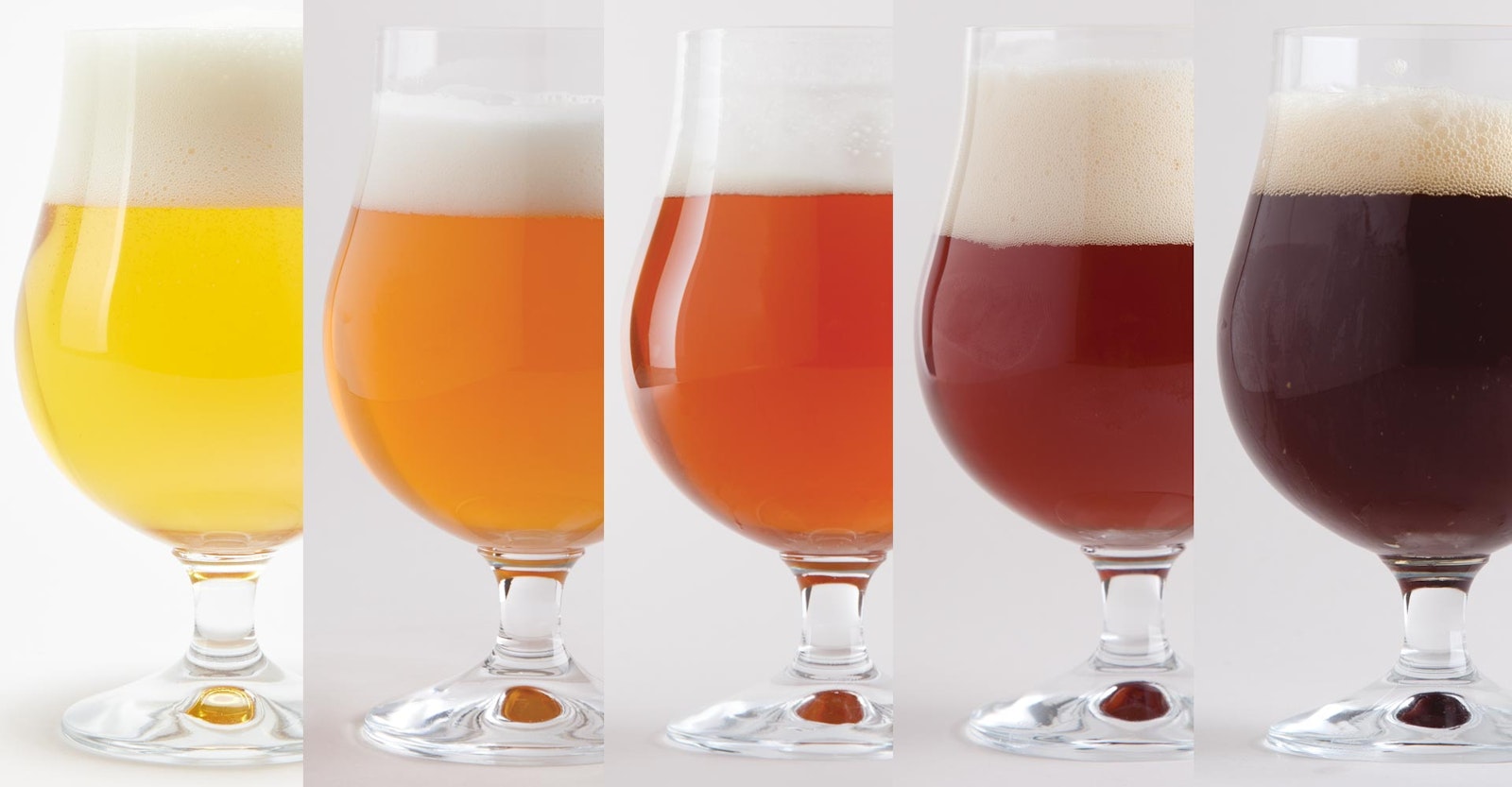The color of beer is an interesting topic. Beer color is measured on an SRM scale, which stands for “Standard Reference Method.” SRM is measured by passing a beam of light (at 430 nm wavelength) through 0.39 inch (1 cm) of beer and measuring attenuation of the light. The 430 nm light used corresponds roughly to a blue-violet light.
The problem with measuring light attenuation at a single point is that it does not convey all the possible color information that comes from full-spectrum light passing through beer. In fact, it would take some eighty-one measurement points to properly characterize the color. We like to think of beer color being limited to the SRM linear color scale, but in reality it’s more like a color wheel that may vary toward any of the basic colors. However, the SRM method does a remarkably good job of characterizing more than 90 percent of the color information in an average beer.
These limitations become obvious in fruit beers or beers such as the Irish red, where colors outside the normal yellow-brown/dark-brown tones come into play. The one-dimensional SRM scale simply does not work well for capturing the deep blue of a blueberry beer, red from raspberries, or even the red tint in an Irish red.

